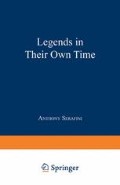Abstract
In 1939, German physicist Lise Meitner and German chemist Otto Hahn proved for the first time that a sufficiently powerful ray of neutrons could split the atom. This, in turn, led physicists to begin to speculate about the feasibility of a new and terrible weapon—the atom bomb. Scientists knew that a powerful bomb might be possible, mainly because of Danish physicist Niels Bohr’s “liquid-drop” model of the atom. In Bohr’s model, published in 1939, the nucleus is a droplet made up of protons and neutrons. Bohr believed that because of the electrostatic repulsions between positively charged protons in the nucleus, tremendous energies were required to hold the nucleus together. Thus, based on purely theoretical considerations, they speculated that this energy, if it could be released, would constitute a tremendously powerful weapon.1
Access this chapter
Tax calculation will be finalised at checkout
Purchases are for personal use only
Preview
Unable to display preview. Download preview PDF.
Endnotes
See Niels Bohr, “On the Constitution of Atoms and Molecules,” Philosophical Magazine, Series 6, 1913 for Bohr’s early thoughts on atomic structure.
Enrico Fermi, “Experimental Production of a Divergent Chain Reaction,” American Journal of Physics, 1952, p. 20; in this article Fermi discusses the structure, operation, and energy production in an atomic pile.1
Urey had discussed isotope separation as early as 1932, in the classic paper, Urey, Brickwedde, and Murphy, “A Hydrogen Isotope of Mass 2 and Its Concentration,” The Physical Review, 1932, 40; here he discusses separation of hydrogen isotopes by diffusion.
For more on Oppenheimer’s college and graduate years, see Alice Kimball Smith and Charles Weiner, “The Young Oppenheimer: Letters and Recollections,” Physics Today, April 1980; see also Katherine Russell Sopka, Quantum Physics in America (American Institute of Physics, New York, 1988), Vol. 10, p. 169.
Carl D. Anderson, “The Positive Electron,” The Physical Review, 1933, p. 43.
Alice Kimball Smith and Charles Weiner, “The Young Oppenheimer: Letters and Recollections,” Physics Today, April 1980.
Marjorie Johnston, editor, The Cosmos of Arthur Holly Compton (Alfred A. Knopf, New York, 1967), p. 267.
The Bird Dogs, “The Evolution of the Office of Naval Research,” Physics Today, August 1961.
Rights and permissions
Copyright information
© 1993 Anthony Serafini
About this chapter
Cite this chapter
Serafini, A. (1993). The Manhattan Project: Witness to the Atomic Age. In: Legends in Their Own Time. Springer, Boston, MA. https://doi.org/10.1007/978-1-4899-6090-0_14
Download citation
DOI: https://doi.org/10.1007/978-1-4899-6090-0_14
Publisher Name: Springer, Boston, MA
Print ISBN: 978-0-306-44460-9
Online ISBN: 978-1-4899-6090-0
eBook Packages: Springer Book Archive

